|
Services
Dental
implants
Bone grafting
procedures
Soft tissue
plastic
Restorative
dentistry
Periodontology
Endodontic
treatment
Teeth
restoration
Oral hygiene |
Dental
implants
History
Replacing lost teeth with a bone-anchored device is not a new
concept at all. Archeological findings showed that the ancient
Egyptian and South American civilizations already experimented with
re-implanting lost teeth with hand-shaped ivory or wood substitutes.
In the 18th century lost teeth were sometimes replaced with
extracted teeth of other human donors. The implantation process was
probably somewhat crude and the success rates extremely low due to
the strong immune reaction of the receiving individual. Brånemark et
al, started the new era of modern implantology in 1969 when they
published their first findings about the titanium dental implants
the first time. Since that time the shape and surface of the
titanium implants have changed. Nevertheless, this method still
remains popular and reliable. Nowadays the most popular are
root-form dental implants.
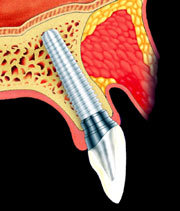 What
are dental implants? What
are dental implants?
Dental implants are small titanium fixtures that are placed in the
jawbone and bond with the bone to replace the root portion of
natural teeth and serve as anchors for crowns, bridges and dentures.
Dental implants can be used to replace a single lost tooth or many
missing teeth.
All dental implants have the same functional requirement: to support
chewing forces and deliver them safely and effectively to
surrounding interfacial tissues over many years. Dental implants can
also be used to attach full or partial dentures.
Why dental implants?
In most cases, anyone healthy enough to have a tooth extracted is a
candidate for dental implants. Age is not usually an obstacle. Time
is important, however, as the size and thickness of the jawbone
begins to decrease
 once
the teeth are lost. This bone shrinkage makes the face look older
and is the reason why lower dentures tend to become looser with
time. The placement and "loading" of dental implants will halt this
loss of bone just as regular exercise helps to prevent osteoporosis. once
the teeth are lost. This bone shrinkage makes the face look older
and is the reason why lower dentures tend to become looser with
time. The placement and "loading" of dental implants will halt this
loss of bone just as regular exercise helps to prevent osteoporosis.
In the past,
replacement of missing teeth has been accomplished with fixed
bridges or removable dentures. However, not all people can adjust to
partial or complete dentures or have teeth that are strong and
healthy enough to support bridges. In addition, healthy tooth
structure must often be sacrificed in order to create the supporting
portions of a bridge. Dental implants allow each replacement tooth
to stand on its own.
Implant supported teeth will improve your appearance. They look and
feel like your natural teeth.
Dental implants can greatly improve the quality of life for complete
denture wearers. Either or both of the lower and upper denture can
be "locked down" by securing it to a number of implants which have
been placed in the jawbone. In some cases, if the patient so
desires, all of the missing teeth can actually be replaced with
implant supported crowns and bridges.
Am I a
candidate for dental implants?
Implants, however, are
not an option for everyone. Because implants require surgery,
patients must be in good health, have healthy gums, have adequate
bone to support the implant and be committed to meticulous oral
hygiene and regular dental visits. If you are considering implants,
a thorough evaluation by your dentist will help determine if you
would be a good candidate.
The success of implantation depends on selection of patients.
Absolute contraindications:
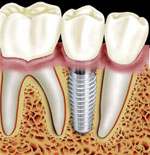 Cardiovascular
problems (hypertension, rheumatic heart disease, etc), uncontrolled
diabetes, psychosis – unrealistic expectations, drug and alcohol
abuse, kidney dialysis, prepubertal age, leukaemia,
immunosuppressive disorders, pregnancy, colagen and bone diseases,
liver disease, uncontrolled hypertension, oncological diseases. Cardiovascular
problems (hypertension, rheumatic heart disease, etc), uncontrolled
diabetes, psychosis – unrealistic expectations, drug and alcohol
abuse, kidney dialysis, prepubertal age, leukaemia,
immunosuppressive disorders, pregnancy, colagen and bone diseases,
liver disease, uncontrolled hypertension, oncological diseases.
Require further investigation:
Systemic haematological disorders (anemia, granulocytopenia, et
cetera), irradiation of jaws (5000 rads or greather), pulmonary
problems (asthma, bronchitis, emphysema), anticogulant therapy,
psychiatric or psychological disorders, chemotherapy,
immunosupression, hemophilia, uncontrolled diabetes, liver and
kidney disorders. Oral considerations: Different kind of oral
pathology (tumors, cysts, impacted teeth and others), ridge
dimensions insufficient to accommodate proper implant placement,
lateral oral interferences, solid centric cuspid disclusion,
parafunctional habits such as bruxism, nail biting, pencil biting,
tobaco use, alcohole abuse, poor oral hygiene.
Surgical dental implant
installation requires understanding of associated anatomical
structures. Planning should be done on three-dimensional edentulous
jaw segment pattern. The KODAK 9000 3D extraoral imaging system
enables dental professionals to obtain low-dose, high-resolution
three-dimensional images, as well as panoramic images, at an
affordable price. This unique “2-in-1” system (3D and panoramic) is
well suited for dental professionals who regularly perform complex
diagnostic, restorative, surgical, and endodontic procedures.
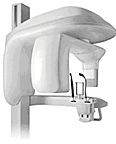
A very high frequency
KODAK 2200 x-ray generator supports superior image quality and
better safety conditions for our patients and our staff.
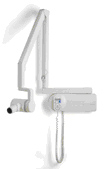
KODAK RVG 6100 Digital
Radiography System has the high resolution digital imaging sensor.
Due to new technological advances with the optical plate and
scintillator, all size sensors have increased "sensitivity," which
allows a practitioner to decrease the radiation dose — up to 10%
decrease for sizes 1 & 2 and 40% decrease for size 0.
What is involved in
placing implants?
First, surgery is performed to place the anchor. This is carried out
under local anaesthetic or sedation. The placement is therefore
painless. Surgery can take up to several hours, and up to six months
may be required for the bone to grow around the anchor and firmly
hold it in place. Some implants require a second surgery in which a
post is attached to connect the anchor to the replacement teeth.
With other implants, the anchor and post are already attached and
are placed at the same time. After the gums have had several weeks
to heal, the next step is begun. The artificial teeth are made and
fitted to the post portion of the anchor. Because several fittings
may be required, this step can take one to two months to complete.
If you are having one or more missing teeth replaced with implant
supported teeth the complete reconstruction process will take 4 to 9
months. This is because it takes time for your bone to grow around
and bond securely to your implants.
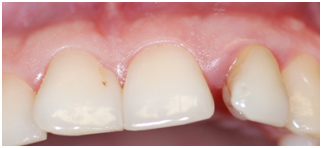
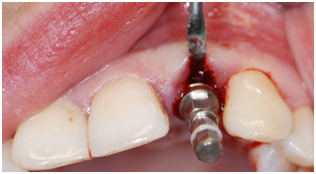
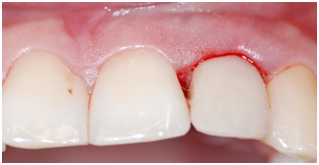

Guarantee
The dental implant manufacturer we use (Straumann) have a 10 year
guaranty on the implant itself.
In a case of failure of dental implant during ossteointegration,
money paid for dental implantation will be refund.
 |








